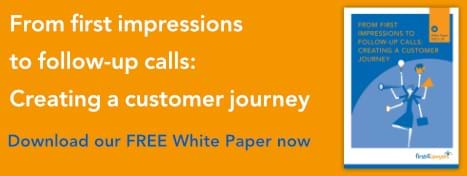In the Media - Learning The Language Of Digital Marketing

Do you know your CTR from your PPC and how it impacts on SEO? When it comes to digital marketing, one of the biggest hurdles is getting to grips with the jargon
These days, digital marketing goes far beyond having a half-decent website and a LinkedIn page. The tools and services now available are invaluable in helping firms better understand their clients and drive new business—and essential in ensuring they keep up with their competitors.
We’ve created a comprehensive glossary of digital marketing terms for our clients, with our top 10 most-used words and phrases below.
Analytics: This refers to the technology used to collect and analyse data on the behaviour of visitors to your website.
Research for our 2020 whitepaper ‘Choosing a lawyer: What drives consumers?’ found that fewer than one in four law firms used data to understand potential clients, but it can be invaluable in helping you to understand what people are looking for and areas where you can improve.
There are a number of different tools and services available, from free-to-use Google Analytics to paid-for options.
Click-through rate (CTR): The number of times people click on an item of interest, such as an advert or blog.
It is important to note that the CTR for display advertising can appear low—easily less than 0.5% – because of the volume of people seeing it, whereas more targeted activity is often much higher. The CTR should also not be viewed in isolation but alongside other information such as the audience size, spend and end conversion rate.
Conversion: Typically, a new business enquiry received via a form submitted through your website, although this can refer to any action you want visitors to perform. You may also hear this described as a goal.
Conversion rate (CVR) is the number of times the above goal is realised—for example, if 100 people visit your website and 10 then contact you via your enquiry form, live chat or phone then the CVR would be 10%.
Impressions: This indicates the number of times an advert is displayed during the times it is run, as opposed to your impression share which is how often it could appear if you ran it all the time. Your impression share could fall, however, if you aren’t high enough up the search results.
Keyword: A word or phrase typed into a search engine when people are looking for a product or service. Companies target keyword searches as part of advertising campaigns.
These can be long tail—such as ‘no win no fee’, which is particularly dominant in the legal sector, and short tail such as ‘lawyer’.
Keyword bidding is how you get your advertisement to appear at the top of the page when someone searches for that word or phrase. For each keyword or group of keywords, advertisers can indicate the maximum cost per click (CPC) they are willing to pay.
Where your advertisement appears is calculated by search engines based on that maximum and also the ad quality, which is worked out by looking at various criteria including the main one of CTR.
Landing page: This is the first page on a website that a person usually sees and not always necessarily the home page.
If you’re a law firm promoting your conveyancing work, for example, you may direct them straight to the conveyancing pages of your website. You may even want to go one step further and build a specific landing page with less information but tighter messaging about why to choose your firm, including any special offers and a call to action to get a quote.
Natural/organic listings: The latter appear just below the paid adverts on a search engine results page (SERP) and these days come in a variety of formats such as knowledge boxes, where people don’t even have to move off the SERP to find the answer to their question.
It takes a lot of work and investment, but the higher your website ranks in a search engine’s natural listings, the more website traffic you’ll get.
Pay per click (PPC): This is the widely recognised term for advertising on paid search browsers such as Google and Bing, where companies pay each time a person clicks on their advertisement.
CPC is the amount paid per click on an advert, with a high number of clicks—and low CPC—meaning the ad is popular with customers. A high CPC doesn’t always mean it’s a waste of money, however, as long as that cost isn’t more than the profit generated.
Monitoring CPC alongside other metrics can also help you highlight the best times to push activity.
Search engine optimisation (SEO): The practice of making changes to web pages, content, and the promotion of that content to improve visibility in the organic—or unpaid—search engine results.
Link-building, where others post links from their website to yours, is also an essential part of SEO, showing that what you have to say is worth reading and boosting your natural/organic rankings.
Spider (or crawler): A programme designed to systematically browse the internet and collect information to help searchers find what they’re looking for (Google constantly crawls websites as part of the process it uses to rank your site when people search for keywords).
You can put blocks on pages—old or duplicate content, for example—to stop them being searched, but don’t block your entire website or you will find yourself excluded from organic rankings.


